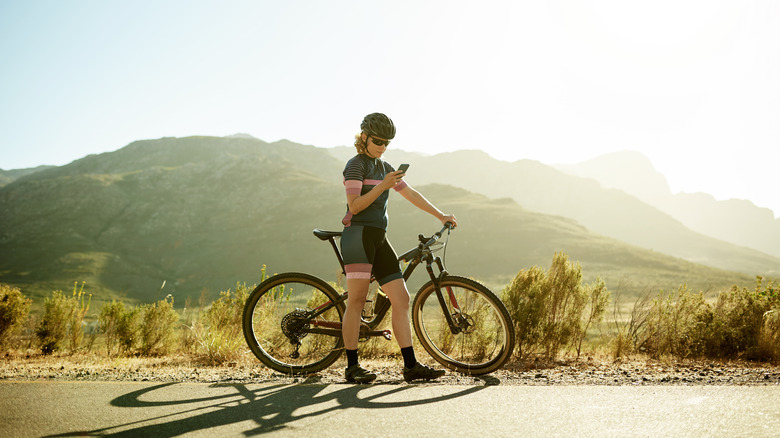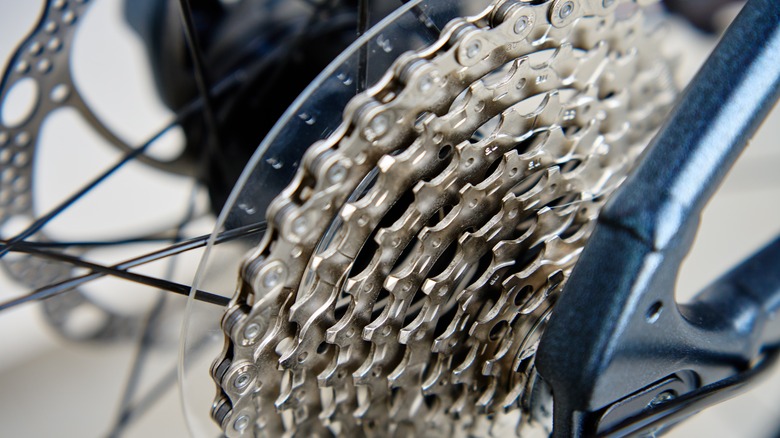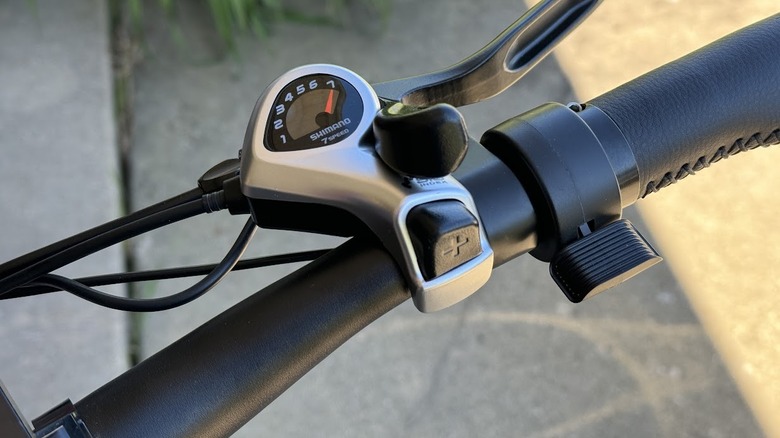
Mikolette/Getty Images
When you were first learning how to ride a bike as a kid, the bike you were learning on probably didn’t have any special bells or whistles on it, aside from perhaps a literal bell on the handlebars. Learning to ride a bike is hard enough without complicating the matter. However, even after you mastered riding an ordinary bike, you may have been surprised to learn of the existence of gear-shifting, hill-conquering mountain bikes. Everyone knew at least one kid who had one, and even if you didn’t know exactly what a «ten-speed» was, you were impressed by it.
Whether you’re just looking to show off your biking prowess to your friends or are planning on becoming a professional long rider, a transmission-equipped bicycle is vital for increasing your control and speed on the road. In broad terms, a bicycle with a transmission works similarly to transmissions on automotive vehicles, but since it’s powered by your own legs and feet, it works a little bit differently than the gear shifter on your dad’s manual car. It’s a deceptively complex system of gears and chains designed to make your bike as responsive as possible to your needs and the condition of the road.
A pair of derailleurs guides the bike chain onto differently-sized cogs

Lazy_Bear/Shutterstock
Technically speaking, all bicycles are equipped with a transmission, even those without a gear shifter. A single-speed bike, also known as a fixed bike, has one cog attached to the rear wheel, which is powered by a chain and chainring with pedals. You pedal the chainring, the chain spins the cog, and the wheel drives you forward.
The main difference in a shifting bike is that, rather than a single cog, the rear wheel is equipped with an entire set of cogs of varying sizes, collectively known as a cassette. Additionally, rather than connecting directly to the front chainwheel with a chain, the cogs in the cassette are connected and managed by a pair of derailleurs, little pulleys that both keep the chain taut and guide it onto the cogs. When you shift gears, the derailleurs move the chain onto a larger or smaller cog in the cassette. This changes the ratio of wheel spins to pedals, which we’ll get into in a moment.
Incidentally, while regular derailleurs are powered by a pneumatic tube and springs connected to the shifter, there are also electronic bicycle transmissions that run this process with battery-powered servos. This isn’t the same thing as an electronic bike, which uses an electric motor to supplement your pedaling, though off-road electronic bikes can also have electronic transmissions equipped.
Different bike gears allow you to pedal more easily in various riding situations

Adam Doud/SlashGear
Contrary to what that childhood friend may have told you, having a shifting transmission on your bike doesn’t actually make it go faster. A bike can only go as fast as its rider can pedal it. Rather, the gears on a shifting transmission allow a rider to more easily manage their pace on a long straightaway, as well as increase power to the rear wheel in the event of inclines or uneven terrain.
A bike’s lowest gear, also known as easy gear, is when the chainwheel is connected to a cog in the cassette that’s approximately the same size. When the components have a ratio of 1:1, a single turn of the pedals will turn the rear wheel exactly once. Because this setting is so easy to turn, it’s good for when you need the bike to be more responsive, such as moving up a hill or getting a fast start in a race.
Shifting to the highest gear will move the chain onto the smallest cog in the cassette, creating a deliberately uneven ratio. For example, if your chainwheel has 50 teeth, and the smallest cog only has 11 teeth, then a single turn of the pedals would turn the rear wheel about 4.5 times. It’s a lot harder to pedal this way from a standstill, but it’s great for maintaining your pace when you’re already at speed.